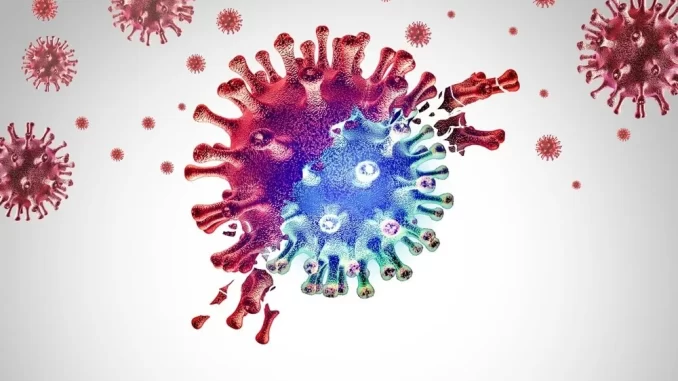
In a latest Cell Host and Microbe observe, researchers introduce spike (S) mutations discovered withinside the extreme acute respiration syndrome coronavirus 2 (SARS-CoV-2) Omicron version into the S protein of the SARS-CoV-2 ancestral Wuhan-Hu 1 stress to observe the useful effect of those mutations.
Background
Omicron is the 5th SARS-CoV-2 version of concern (VOC) to be diagnosed for the reason that begin of the coronavirus sickness 2019 (COVID-19) pandemic. At the start of 2022, the Omicron sub-version BA.1 changed the Delta VOC, which became formerly the dominant circulating stress worldwide. The Omicron BA.2 sublineage sooner or later outcompeted BA.1 and has been accountable for the maximum latest wave of SARS-CoV-2 infections.
Only approximately 13% of the SARS-CoV-2 genome encodes for the S protein. Nevertheless, the Omicron S protein carries the best wide variety of mutations compared to different SARS-CoV-2 versions.
More specifically, the Omicron BA.1 and BA.2 S proteins percentage approximately 20 mutations on this region, 12 of which are living withinside the receptor-binding domain (RBD). Fourteen of those mutations are unique for BA.1 and 9 for BA.2. The final lineage-unique S mutations are discovered withinside the N-terminal domain (NTD) of the S protein.
New Omicron sub-versions are constantly rising, a number of which encompass BA.2.12.1, BA.4, and BA.5. These mutations include extra S mutations in amino acid (AA) residues L452 and F486 that would in addition growth their immune evasion residences and transmission fitness.
All modern-day COVID-19 vaccines are primarily based totally at the SARS-CoV-2 Wuhan-Hu 1 S antigen. As a end result, mutations withinside the NTD or RBD of the Omicron S may want to growth the resistance of those lines to neutralizing antibodies (nAbs). These mutations can also be important determinants of the better transmissibility and decreased pathogenicity of those versions.
To date, preceding research have now no longer defined the useful effect of maximum Omicron S mutations.
About the observe
In the prevailing observe, researchers added forty eight S mutations of Omicron sublineages BA.1 and BA.2 into the Wuhan-Hu1 S via site-directed mutagenesis. Sequence evaluation of the S genes became sooner or later finished to verify that every one constructs contained the favored mutations. The effect of every AA alternate on viral expression, proteolytic processing, infectivity, and susceptibility to nAbs and sera from vaccinated people became additionally conducted.
Vesicular stomatitis virus debris pseudotyped (VSVpp) with the parental and mutant S proteins had been used to investigate the effect of Omicron BA.1 and BA.2 S mutations. S proteins missing an synthetic deletion of the C-terminal endoplasmic reticulum (ER)-retention motif had been extensively utilized for in vitro assays.
The researchers extensively utilized full-period S proteins containing a simian virus 5 (V5) epitope tag for evaluation of Omicron S expression and processing. Several assays had been additionally finished to quantify the wide variety of VSVpp inflamed Caco-2 cells over time.
Study findings
The BA.1 and BA.2 S proteins exhibited notably decreased contamination efficiencies compared to the Wuhan Hu-1 S protein, even as the S protein of the Delta VOC became related to notably improved activity. Most of the 20 AA modifications withinside the S proteins shared among BA.1 and BA.2 did now no longer have an effect on the performance of VSVpp contamination. Furthermore, maximum of the BA.1 and BA.2 unique NTD mutations prompted minor results on VSVpp infectivity.
Individual RBD mutations consisting of S371F/L, S375F, and T376A strongly impaired S-containing VSVpp infectivity and S processing. More specifically, S375F nearly absolutely disrupted S characteristic and processing, with the adjacent BA.2-unique T376A mutation displaying comparable disruptive results. Although those mutations notably decreased S-mediated contamination, that they’d slight results on neutralization with the aid of using vaccinated sera.
Mutations withinside the 3 serine residues of S371, S373, and S375 critically impaired the capacity of the Wuhan Hu-1 S protein to mediate virus-mobileular and mobileular-mobileular fusion. Furthermore, the S371L, S373P, and S375F AA mutated residues promoted interprotomer interactions among the “down” RBDs.
Conversely, maximum lineage-unique NTD mutations along with A27S, T95I, Δ142-144, G142D, INS214EPE, L212I, and V213G, had been least powerful in lowering S sensitivity to neutralization with the aid of using sera from vaccinated people. This locating helps preceding reviews suggesting that the NTD is a goal of nAbs in vaccinated sera.
Multiple shared mutations withinside the RBD of BA.1 and BA.2 S proteins decreased the sensitivity of VSVpp to neutralization with the aid of using vaccinated sera. In addition, N440K or G446S mutations conferred resistance to healing antibodies imdevimab, while modifications to E484A and Q493R altered the efficacy of bamlanivimab. These effects recommend that unmarried AA modifications can result in resistance of the versions in opposition to nAbs.
The modern-day observe highlighted that Omicron sequences in worldwide databases that seem to encode S residues at positions 371, 373, and 375 are erroneous. Since a few obvious versions withinside the S proteins of rising SARS-CoV-2 versions end result from sequencing artifacts, it’s far crucial to remember those even as reading mutations particularly AA sequences.
Moreover, the molecular mechanisms accountable for numerous mutations withinside the Omicron S protein stay unknown. For example, BA.2-unique modifications withinside the NTD critically decreased S-mediated contamination and processing; however, those modifications do now no longer have an effect on acknowledged useful domains.
Similarly, a BA.2-unique N856K substitution generated capacity cleavage webweb sites for site-1 protease (S1P) that impeded the exposition of the fusion peptide for membrane fusion however decreased S-mediated contamination no matter regular processing degrees. Conversely, N764K improved infectivity and the degrees of processed S in VSVpp.

Leave a Reply